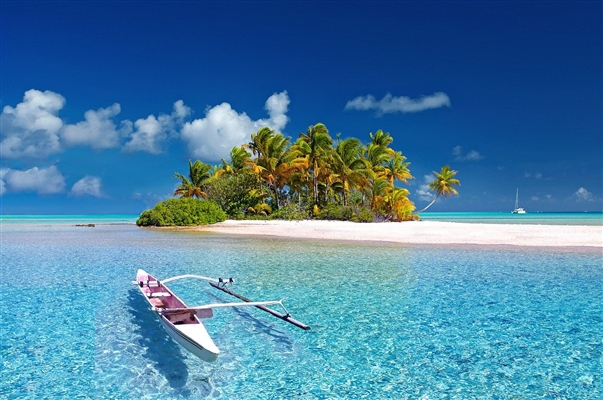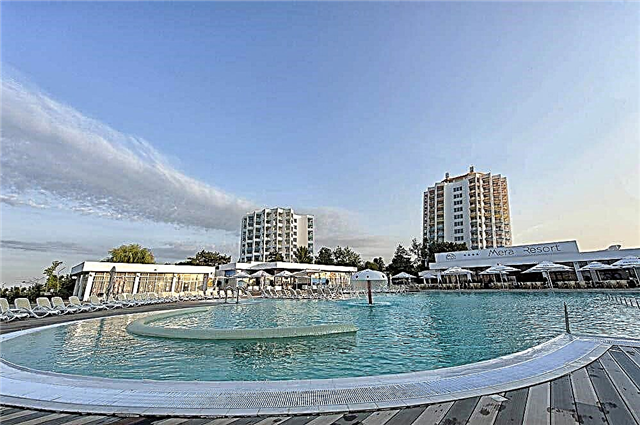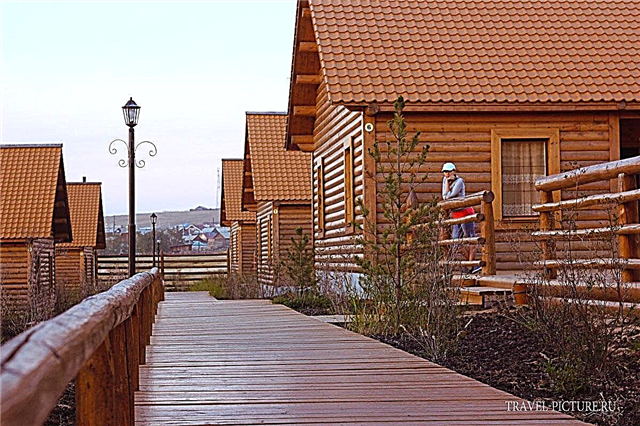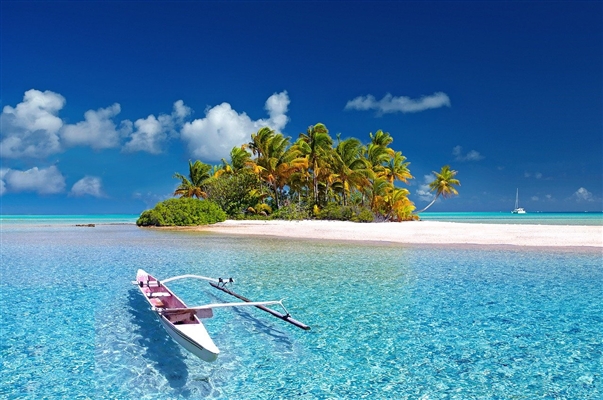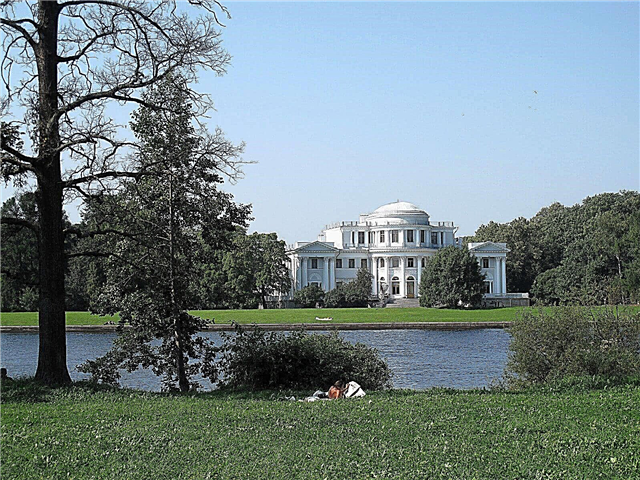Most tourists perceive St. Petersburg primarily as a city famous for palaces, luxurious architecture, and unusual museums. However, natural sights of the city are also able to surprise. Many of them are specially protected natural areas, natural monuments, or are part of a UNESCO World Heritage Site called the Historic Center of St. Petersburg and Associated Complexes of Monuments.
Many of the protected areas are known to everyone and are included in most travel guides to St. Petersburg - Oranienbaum or Tsarskoe Selo. But other natural areas are able to amaze travelers with their untouched nature, variety of flora and fauna, and unique landscape. Anyone can visit the protected areas and appreciate their beauty.
UNESCO World Heritage Sites
The main protected areas of the city of federal importance.
Museum-reserve "Tsarskoe Selo"
This is an incredibly amazing monument of park and architectural art. Great masters worked on the harmonious combination of buildings and landscape around. A special surprise is the Dutch garden, made in the French style. Its lines are both sophisticated and luxurious. The English Garden will delight lovers of landscape views more. The views around the Big Pond combine the charm of wildlife and graceful buildings.

Park "Dubki"
Object of the cultural heritage of St. Petersburg. A beautiful Dutch garden has been preserved in the park since the 18th century. But the peculiarity of the park is the corners of wildlife. They are based on centuries-old oaks. It was the oak grove that once attracted the attention of Peter I, admiring it, he decided to found a picturesque park here. Birches, lindens, black alder have survived in the protected areas, and rare birds live.

Museum-reserve "Oranienbaum"
The palace and park complex of Oranienbaum is an architectural monument. It got its name in honor of the greenhouse with rare orange trees. In addition to the beautiful architecture of palaces and pavilions, guests of the complex are amazed by its landscape and beautiful nature. Linden and maple alleys of the lower garden are in harmony with fountains and statues, the upper park surprises with a variety of ponds, canals and graceful bridges.

Botanical gardens and dendrological parks
Three main botanical gardens of St. Petersburg with federal status.
Peter the Great Botanical Garden
Founded at the beginning of the 18th century by Peter I as a garden with medicinal plants. To date, it contains a collection of flowers, shrubs and trees from all over the world. More than 7000 different plants grow on an area of 1 hectare. The garden's greenhouses display unique collections of rare plants. Exotic flowers, cozy atmosphere, beautifully designed landscapes attract thousands of visitors to the botanical garden.

Botanical Garden of St. Petersburg State University
Created at the beginning of the 19th century. During this time, his collection began to amount to more than 4,000 plants. The funds of the garden include subtropical plants, conifers, tropical ferns, cacti. The collection of the herbarium has been replenished by travelers for several centuries, bringing samples from different continents. The museum of the botanical garden is also interesting. Lectures for students are held in the greenhouses, but they are also open for free visits to everyone.

Botanical Garden FEU
The garden area is 43 hectares. It has two parts. The park is an open area of dense forest. Several ponds, where ducks and other birds live, give it a special beauty. The closed part includes arboretums, a greenhouse, an ornamental nursery and a flower plantation. Research and educational activities are actively carried out in the botanical garden. Interesting excursions are organized for everyone.

Existing reserves and natural monuments
Interesting protected areas that already have a fixed legal status.
Elagin island
A large park that residents and guests of the city love to visit. It is not only a recreational area, but also a place where interesting events are held. The landscape park occupies most of the island in the Neva delta. Its cultural and historical importance is underlined by the fact that UNESCO has taken this place under its protection. A huge Oil Meadow is spread between the beautiful palace buildings.

Preserve "Gladyshevsky"
The area of the nature reserve is about 8000 hectares. Its protected area is located on a mountain ledge. The Gladyshevka River is inhabited by a mollusk included in the Red Book - common pearl mussel. There are well-equipped recreation areas and beaches in the reserve. Eco trails are laid along its territory. They make it possible to walk in the park without harming the animal world. You can spend the whole day outdoors.

"West Kotlin"
There are valuable natural objects on the territory of the reserve. It is located in a narrow part of the island, while on its different shores there can be completely different weather. There is an ornithological tower in the reserve, from which anyone can watch the life of birds. On the territory of the protected area, there are many information boards that tell about interesting facts about the animals of the reserve.

Duderhof heights
The natural monument is a group of hills of glacial origin. The highest of the three mountains is 170 meters high. Eco-routes of various lengths are laid between the mountains. They are equipped with observation areas, recreation areas with benches, information stands. Especially beautiful Duderhof heights look in the spring during the flowering of numerous plants.

Reserve "Novoorlovsky"
This park resembles a real forest. The forest paths are overgrown with ferns, and moose sometimes wander into remote places. Most of the trails are laid in the northern part of the park. The Kamenka River flows here. In the central part of the reserve is Zapovednaya Street, and the southern part borders on the Oryol quarry. Most of the park's trees are pines, but there are also oaks, viburnum, maples. There is a small forest strip with white willow.

Park "Sergievka"
Most often, tourists come to Peterhof to see the famous fountains and palaces. But it is worth going a little further, as the beautiful and authentic nature of the ancient gardens will open to your eyes. The landscape park of the 19th century Sergievka covers an area of 120 hectares. Its nature is very diverse - forests, meadows, swamps and reed beds near the coast. Artificial lakes with dams and numerous streams give the park a special charm.

"Lake Shchuchye"
The reserve is located on the Karelian Isthmus. Its size is quite small - the length is a little more than one kilometer, the width is 0.6 kilometers. The basis of the reserve is a taiga massif of spruces and pines. In summer, you can harvest a good harvest of mushrooms and blueberries in it. Druzhinnoye Lake is located near the Shchuchye Lake. People call it "Devil's". These places are often visited due to the cleanliness of the water and the proximity of the road.

"North coast of the Neva Bay"
The state reserve is located on the shores of the Gulf of Finland. It was created with the aim of preserving a natural complex of great value for the region. This is a mixed coastal massif where migratory birds stop for a stop. Three species of plants in the reserve are included in the Red Book of Russia. The reserve includes the island of Verperluda, which is interesting for its unique variety of plants.

"Sestroretskoe swamp"
One of the largest sanctuaries in St. Petersburg with an area of 1877 hectares. Located next to the Sestroretsk reservoir, the Black and Sestra rivers flow through the reserve.An ecological ladder has been laid along the territory, which passes through the most picturesque places. They never tried to drain the Sestroretsk bog, this allowed preserving the pristine nature here. The reserve is home to different species of birds and animals.

"South coast of the Neva Bay"
The area of the reserve is 266 hectares. It includes three sections - Znamenka, Own dacha and Kronstadt colony. In the shallow waters of the bay, there are many reed and reed thickets, where various species of birds nest, including rare ones. The floes are of great interest to botanists. The landscape zone of the reserve is diverse and has a belt character. There are both forest vegetation and willow.

Reserve "Yuntolovsky"
The reserve is famous for its unique and beautiful nature. On a large area of almost 1000 hectares, rare animals and birds live - bittern, oriole, muskrat, roe deer. The reserve includes the Lakhtinsky Bay, the Kamenka, Yuntolovka, Chernaya, Glukharka rivers and part of the Lakhtinsky bog. Most of the territory is occupied by pine and birch forests, small areas with black alder. There is a research center and a nature museum on the territory of the reserve.

Valley of the Popovka River
The natural monument is located on the outskirts of Pavlovsk. The Popovka River is not big, its width is no more than 4 meters. The valley of this river is taken under state protection because of the areas of Paleozoic rocks that come to the surface here. Their age reaches 500 million years. In addition to ancient rocks, scientists are also interested in the nature of the valley. Plants, rare for the nature of St. Petersburg, grow here.

"Komarovsky Bereg"
The natural monument is located on the coast of the Gulf of Finland. An ecological path has been laid along its territory. It is popular with locals and visitors alike. The nature here is picturesque and interesting. The route passes by tall sprawling spruce trees and ponds and ends at the coast of the bay. The territory of the natural object is well-groomed and equipped for guests - there are information boards, benches and gazebos.

Petrovsky pond
Artificial reservoir with an area of 0.5 hectares. It is a foundation pit formed by the extraction of a granite monolith for the pedestal of the Bronze Horseman monument. The territory of the natural monument has a weak infrastructure and its place is rarely visited by tourists. A small path leads to the pond; an information stand is installed on the shore telling about the history of the pond, as well as about the peculiarities of the local flora and fauna.

Perspective natural monuments and reserves
Interesting regional PAs planned for creation.
Boulder in Martyshkino
Little-known geological natural monument. Thousands of years ago it was brought here by a glacier. The boulder is located on the shore of the Gulf of Finland, where the Izhora used to live. Local residents considered it a place of power, women who wanted to get pregnant and sick people came to it for healing. He currently has visible damage. The boulder is about 5 meters long, 4 meters wide, and 3 meters high.

Park Babolovsky
It is one of the largest parks in the suburbs of St. Petersburg. Its main attraction is the Babolovsky Palace. Preserved ancient buildings - a stone bath and Taitsky water conduit. The park is laid out in the English style; Emperor Nicholas II and his wife loved to relax in its calm atmosphere. Mostly deciduous trees grow in the park - maple, oak, linden, there are areas with relict spruce.

Park Separate
The park was laid out at the beginning of the 19th century. It is located at a distance from other imperial parks, for which it got its name. There are no special attractions in it, but residents and guests of the city often come here. In winter they go skiing, and in summer they have picnics on the banks of the picturesque Kolonistsky pond. This is a great place to relax - it is quiet, cozy, clean, uncrowded and very beautiful.

Olginskie boulders
The geological monument is a glacial boulder, split into pieces. In the 18th century, it was considered as the basis for the pedestal of the Bronze Horseman monument. For unknown reasons, the decision was made in favor of the Thunderstone. The boulder is split into 4 pieces. The largest part is 6 meters long, 3 meters high, and 2 meters wide. It is believed that it split into pieces as a result of the explosion.

Park "Aspen Grove"
Earlier on the territory of this park there were luxurious mansions, from which now there are practically only ruins. Luxurious gardens have been lost. Only the trees have survived, but they have not been properly cared for either. There are several lakes in the park. And if you do not pay attention to the ruins of the estate, you can enjoy the views of nature. The improvement of the park is currently planned.

Sosnovka park - the sources of the Murinsky stream
The area of the park is 302 hectares. The Murinsky stream originates in this park and has a length of almost 9 km, the width of the stream reaches 30 meters. The places in the park area around the stream are incredibly picturesque and beautiful. This is a large area of forest, formerly the Benoit farm. Currently, there are plans to establish a large area with attractions and entertainment here, and clean the stream of pollution.

Puhtolova Mountain
A picturesque place near Zelenogorsk. Many cottages for tourists have been built in the coniferous forest. In the summer, guests come here for fishing, there is an opportunity to rent gazebos with barbecue, tables for playing table tennis and badminton are equipped. In winter, outdoor recreation can be combined with skiing, cheesecakes or snowboarding. The resort has comfortable lifts, equipment rental.

Coastal ledge "Serovo"
It is a high steep ledge, which is overgrown with maples, pines and birches. It runs along the coast of the Gulf of Finland for 2.5 km. The cliff reaches a height of 35 meters. Previously, this ledge was the coast of the ancient Litorina Sea. In the coming years, it is planned to assign the status of a natural monument to this place. This place will be especially interesting for ornithologists, because several species of birds fly here to nest.

Valley of the Okhta River and its tributaries
The length of the Okhta River is 99 kilometers. The river is 50 meters wide and 5.5 meters deep. Together with its tributaries, the river forms an interesting natural complex. The largest tributaries are Kharvazi, Pippolovka, Lubya and Zhernovka. In the places of confluence, as well as along the entire length of the valley, nature is striking in its natural beauty. Assigning the status of a state-protected site will help preserve this beauty.

Woodland Old border
The natural site includes a large forest area and the Sestra river valley. Its area is over 2000 hectares. The forest mainly consists of coniferous trees - spruce, pine, fir. There is no infrastructure for tourists, no well-equipped trails. However, visitors prefer walking along small forest paths among real wildlife. Clean air and natural, pristine beauty are incredibly picturesque.

English oak in the Summer Garden
An unusual monument of wildlife - the oak is more than 300 years old. It has been growing in this place since the founding of the regular garden. The oak is 38 meters high, its circumference is 333 cm. There is a sign next to the tree, which tells about the interesting fate of the long-lived oak. The oak continues to grow, experts believe that with proper care it will live for another 500 years and will surprise more than one generation of visitors with its power.

English oak in the Mikhailovsky Garden
This centuries-old oak tree was planted back in the days when a Swedish estate was located on the site of the Mikhailovsky Garden. It is included in the register of old-growth trees in Russia. A venerable tree needs special care; for this, a special training manual has been developed. This oak tree is about 60 years older than its counterpart in the Summer Garden - while it is in excellent condition and continues to grow. The height of the pedunculate oak is almost 30 meters.

Spring lakes on Maurice Torez Avenue
Another name for the lakes is Linden. These lakes are the pride of local residents. The spring that feeds the lakes is arranged as a holy spring. The bowl of the spring is decorated with marble, a plate has been installed, which says that the august family of Nicholas II visited the spring. In the place where the spring water flows into the lake, there used to be a swimming pool with a marble staircase. Now it is hidden by water. The area around is beautiful and picturesque.

Suzdal lakes
A green oasis of three lakes near the city center. They are of glacial origin. Swimming in the lakes is prohibited, but people still come here on vacation. The Upper Lake is great for a beach holiday, to sunbathe and barbecue. Fans of outdoor activities and fishermen come to the middle lake. The Big Lower Lake is the least populated; it is here that you can relax in quiet seclusion.

Recreational area
A popular place for rest and treatment in St. Petersburg.
Medical and recreational area of the Kurortny district of St. Petersburg (Sestroretsk resort)
A unique sanatorium is located just half an hour's drive from the city. Its peculiarity is curative mud. They are used for lotions, electrophoresis and baths. The resort is located in a beautiful area. It is surrounded by a pine forest with sea air. This is a great place for a good rest. An observation deck is located near the main building, from which a wonderful view of the Karelian Isthmus opens.



